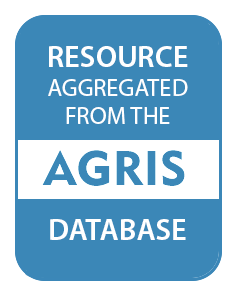What is AGRIS?
AGRIS (International System for Agricultural Science and Technology) is a global public database providing access to bibliographic information on agricultural science and technology. The database is maintained by CIARD, and its content is provided by participating institutions from all around the globe that form the network of AGRIS centers (find out more here). One of the main objectives of AGRIS is to improve the access and exchange of information serving the information-related needs of developed and developing countries on a partnership basis.
AGRIS contains over 8 million bibliographic references on agricultural research and technology & links to related data resources on the Web, like DBPedia, World Bank, Nature, FAO Fisheries and FAO Country profiles.
More specifically
AGRIS is at the same time:
A collaborative network of more than 150 institutions from 65 countries, maintained by FAO of the UN, promoting free access to agricultural information.
A multilingual bibliographic database for agricultural science, fuelled by the AGRIS network, containing records largely enhanced with AGROVOC, FAO’s multilingual thesaurus covering all areas of interest to FAO, including food, nutrition, agriculture, fisheries, forestry, environment etc.
A mash-up Web application that links the AGRIS knowledge to related Web resources using the Linked Open Data methodology to provide as much information as possible about a topic within the agricultural domain.
Opening up & enriching information on agricultural research
AGRIS’ mission is to improve the accessibility of agricultural information available on the Web by:
- Maintaining and enhancing AGRIS, a bibliographic repository for repositories related to agricultural research.
- Promoting the exchange of common standards and methodologies for bibliographic information.
- Enriching the AGRIS knowledge by linking it to other relevant resources on the Web.
AGRIS is also part of the CIARD initiative, in which CGIAR, GFAR and FAO collaborate in order to create a community for efficient knowledge sharing in agricultural research and development.
AGRIS covers the wide range of subjects related to agriculture, including forestry, animal husbandry, aquatic sciences and fisheries, human nutrition, and extension. Its content includes unique grey literature such as unpublished scientific and technical reports, theses, conference papers, government publications, and more. A growing number (around 20%) of bibliographical records have a corresponding full text document on the Web which can easily be retrieved by Google.
Members:
Resources
Displaying 4746 - 4750 of 9579Identifying landslide activity as a function of economic development: a case study of increased landslide frequency surrounding Dominical, Costa Rica
Despite legislation and voluntary initiatives aimed at protecting the environment, previously undeveloped areas of Costa Rica are subject to new development opportunities. This growth has been largely unchecked, and has led to enormous amounts of foreign direct investment. This unchecked investment has led to destabilization of the natural environment, and, in the case of the Dominical–Uvita corridor on the Pacific Coast, has led to an observed increase in landsliding activity.
Use of Fire in the Cerrado and Amazonian Rainforests of Brazil: Past and Present
Humans have been changing the natural fire regimes in most Brazilian vegetation types for over 4000 years. Natural lightning fires can easily happen in savannas and grasslands, but they are rare in the moist rainforests. Today, anthropogenic fires are frequent in both the fire-adapted cerrado (Brazilian savanna) and the fire-sensitive rainforest. In this paper, I compare two very different biomes concerning their susceptibilities and responses to fire: the Amazon rainforest and the cerrado.
attribute-based approach to contingent valuation of forest protection programs
The hemlock woolly adelgid is an invasive insect that is damaging hemlock forests in the eastern United States. Several control methods are available but forest managers are constrained by cost, availability, and environmental concerns. As a result forest managers must decide how to allocate limited conservation resources over heterogeneous landscapes.
relative influence of spatial context and catchment- and site-scale environmental factors on stream fish assemblages in a human-modified landscape
- Environmental factors act in a hierarchical manner at multiple spatial scales to influence the organisation of ecological assemblages; however, the relative influence of the different scale-related factor groups is poorly known. We evaluated the importance of catchment-scale and site-scale environmental variables, as well as the spatial context of the sampling sites, in shaping stream fish assemblages in an agriculture-dominated landscape in Hungary.
Land use policies and practices for reducing vulnerability in rural Tajikistan
Tajikistan, with 93% of its surface area taken up by mountains and 65% of its labor forceemployed in agriculture, is judged to be highly vulnerable to risks, including climate changerisks and food insecurity risks. The article examines a set of land use policies and practices thatcan be used to mitigate the vulnerability of Tajikistan’s large rural population, primarily byincreasing family incomes. Empirical evidence from Tajikistan and other CIS countries suggeststhat families with more land and higher commercialization earn higher incomes and achievehigher well-being.


